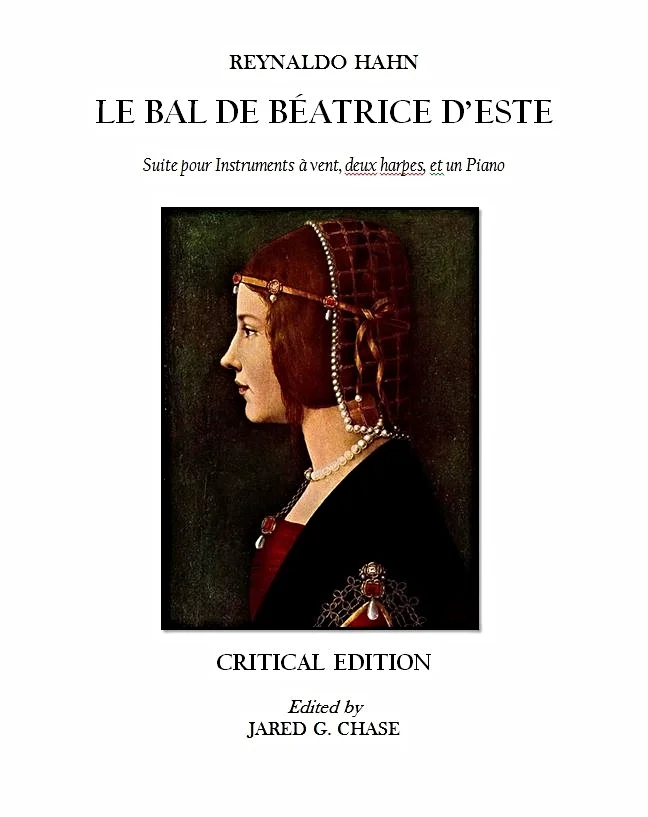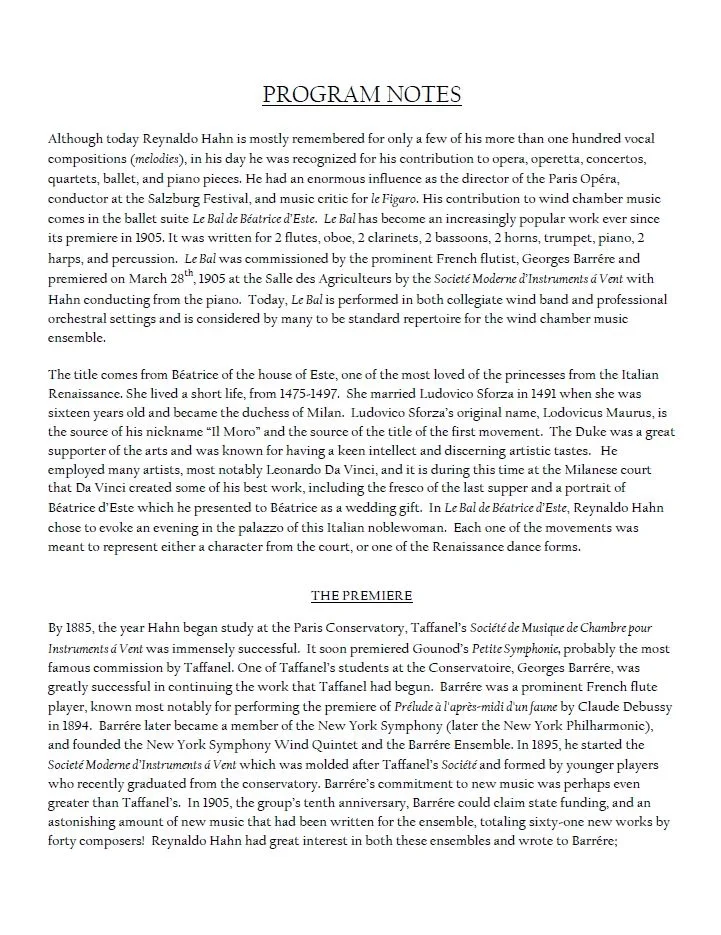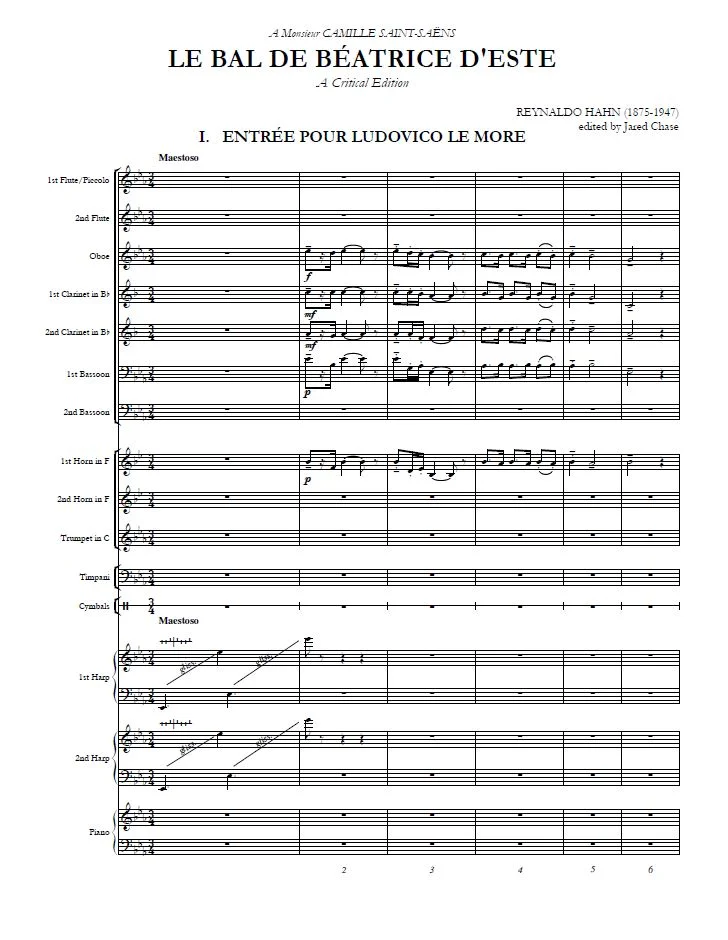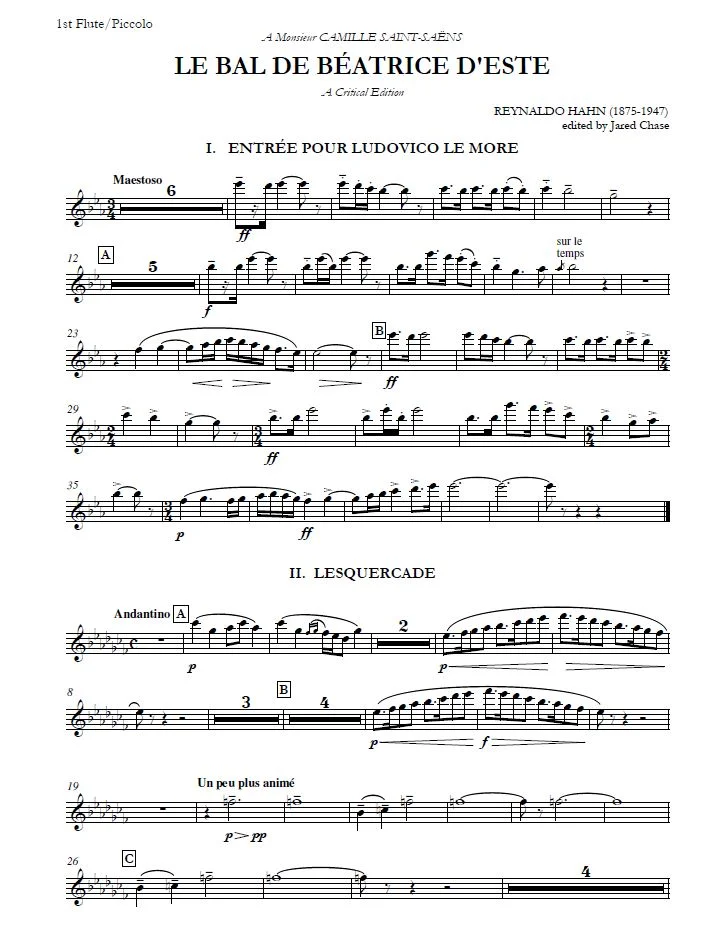Score and Parts: Le Bal de Beatrice d'Este by Reynaldo Hahn: A Critical Edition
Score and Parts: Le Bal de Beatrice d'Este by Reynaldo Hahn: A Critical Edition
Includes score and parts for 2 flutes, oboe, 2 clarinets, 2 bassoons, 2 horns, trumpet, piano, 2 harps, and percussion. 17 min.
PROGRAM NOTES
Although today Reynaldo Hahn is mostly remembered for only a few of his more than one hundred vocal compositions (melodies), in his day he was recognized for his contribution to opera, operetta, concertos, quartets, ballet, and piano pieces. He had an enormous influence as the director of the Paris Opéra, conductor at the Salzburg Festival, and music critic for le Figaro. His contribution to wind chamber music comes in the ballet suite Le Bal de Béatrice d’Este. Le Bal has become an increasingly popular work ever since its premiere in 1905. It was written for 2 flutes, oboe, 2 clarinets, 2 bassoons, 2 horns, trumpet, piano, 2 harps, and percussion. Le Bal was commissioned by the prominent French flutist, Georges Barrére and premiered on March 28th, 1905 at the Salle des Agriculteurs by the Societé Moderne d’Instruments á Vent with Hahn conducting from the piano. Today, Le Bal is performed in both collegiate wind band and professional orchestral settings and is considered by many to be standard repertoire for the wind chamber music ensemble.
The title comes from Béatrice of the house of Este, one of the most loved of the princesses from the Italian Renaissance. She lived a short life, from 1475-1497. She married Ludovico Sforza in 1491 when she was sixteen years old and became the duchess of Milan. Ludovico Sforza’s original name, Lodovicus Maurus, is the source of his nickname “Il Moro” and the source of the title of the first movement. The Duke was a great supporter of the arts and was known for having a keen intellect and discerning artistic tastes. He employed many artists, most notably Leonardo Da Vinci, and it is during this time at the Milanese court that Da Vinci created some of his best work, including the fresco of the last supper and a portrait of Béatrice d’Este which he presented to Béatrice as a wedding gift. In Le Bal de Béatrice d’Este, Reynaldo Hahn chose to evoke an evening in the palazzo of this Italian noblewoman. Each one of the movements was meant to represent either a character from the court, or one of the Renaissance dance forms.
A CRITICAL EDITION
For this new edition, over 700 mistakes and inconsistencies have been carefully edited and corrected from the original Heugel and Cie publication. These mistakes ranged from discrepancies in articulation, dynamics, style indications, wrong dynamics, inconsistent phrase markings, wrong notes, to whole sections where music was missing from the score. Rehearsal marks have been corrected and additional rehearsal marks have been added. For a complete list of these corrections and further information about this edition, Reynaldo Hahn, and the origins of this composition, please see the dissertation Le bal de Béatrice d’Este by Reynaldo Hahn: A Critical Edition by Jared Chase.






